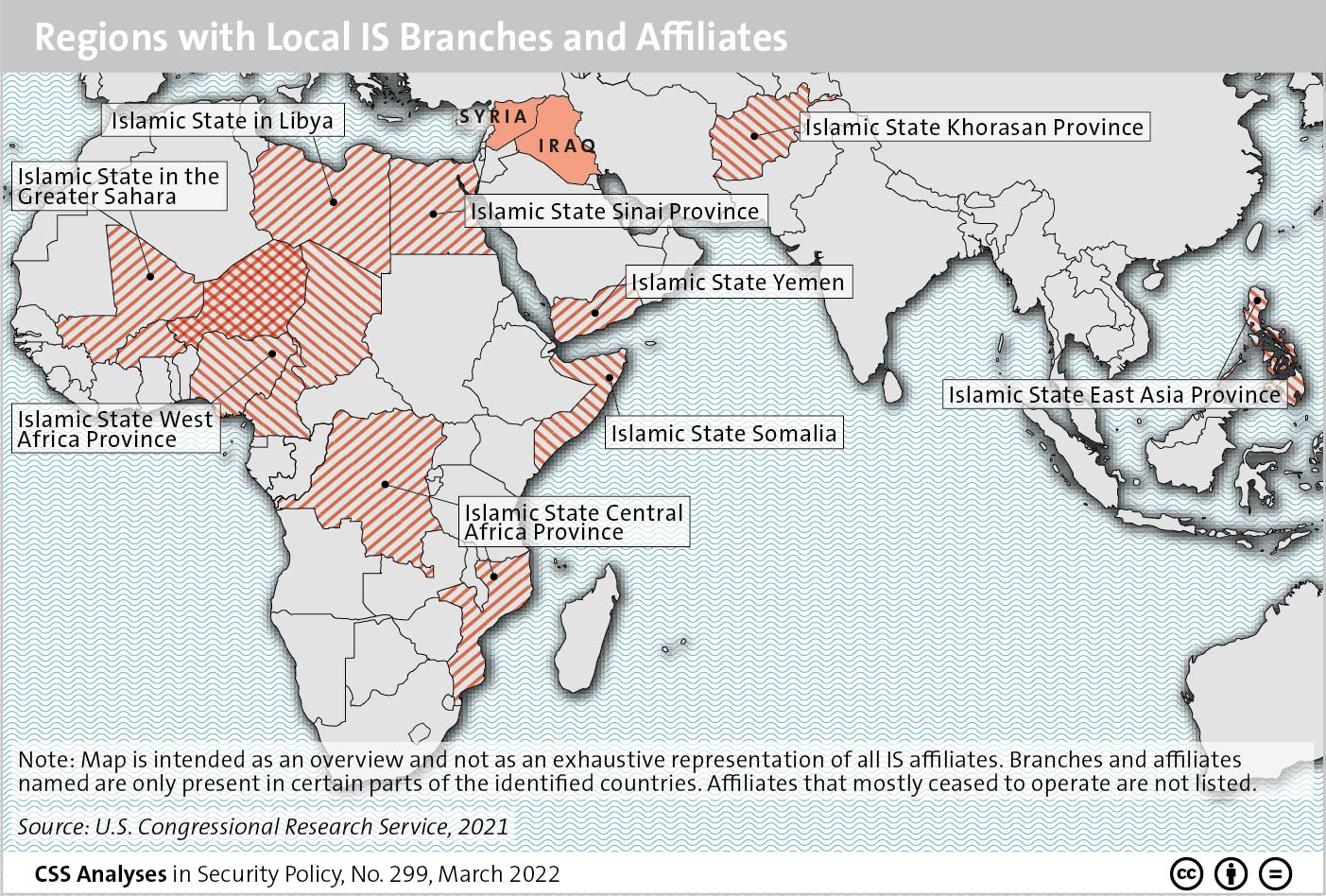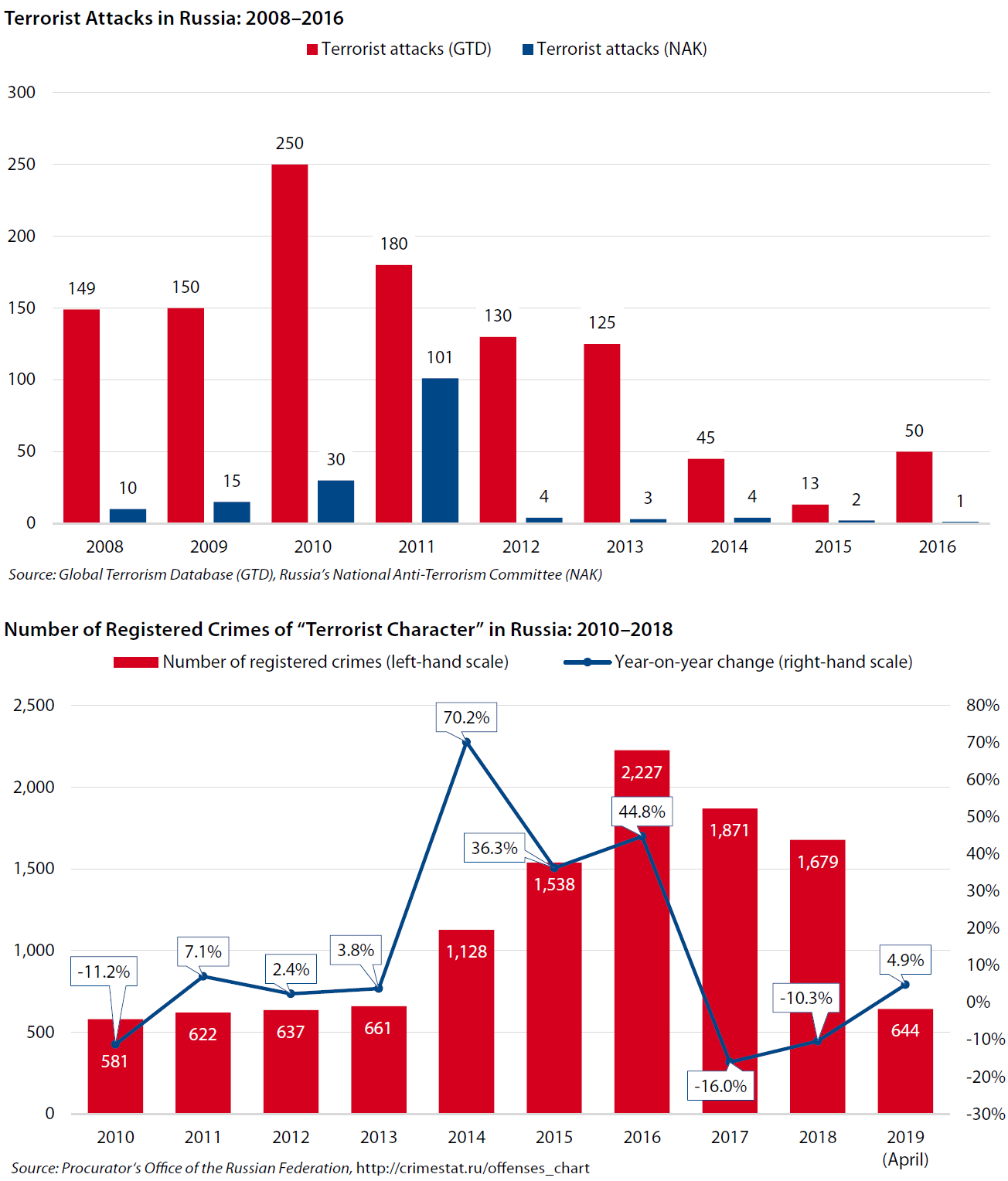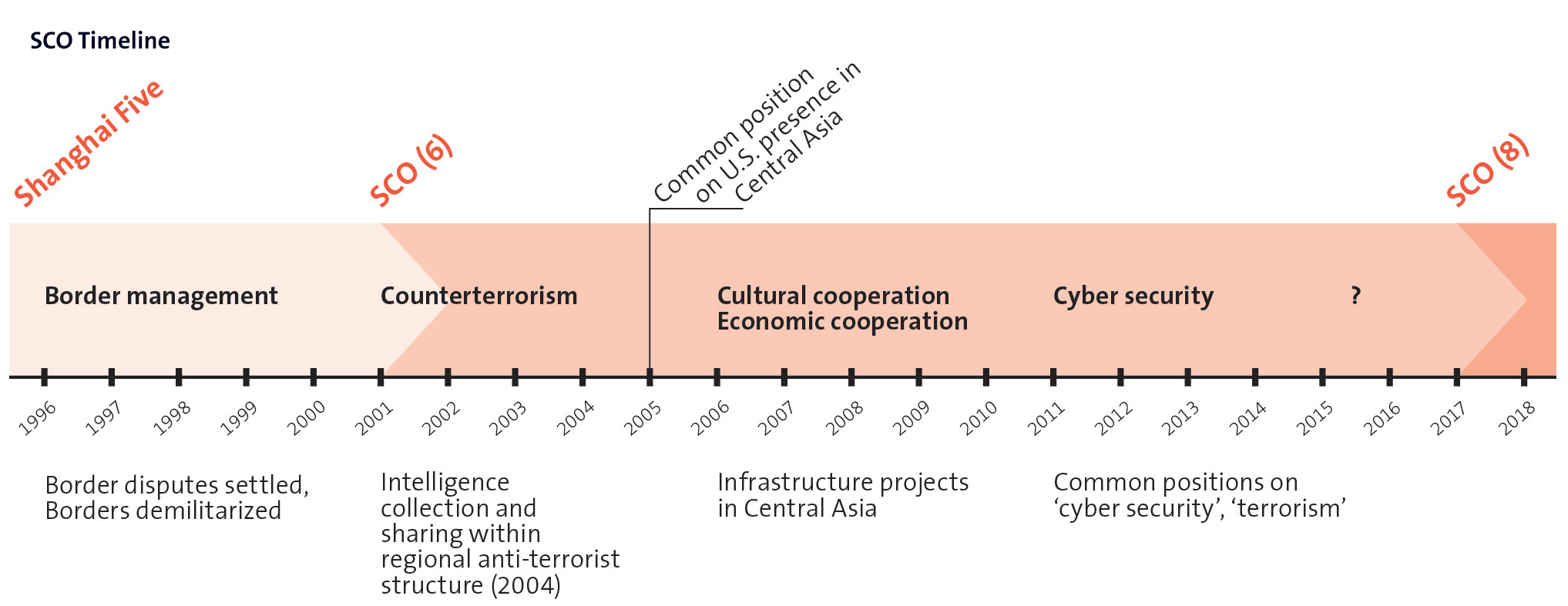
This week’s featured graphic shows the core IS’ state as of March 2022 as well as its affiliates in Africa, the Middle East and Asia. For a deeper assessment of the danger the IS still poses, read Fabien Merz’ CSS Analysis in Security Policy here.

This week’s featured graphic shows the core IS’ state as of March 2022 as well as its affiliates in Africa, the Middle East and Asia. For a deeper assessment of the danger the IS still poses, read Fabien Merz’ CSS Analysis in Security Policy here.

These graphics provide an overview of the trend in terrorist attacks in Russia since 2008. For an examination of the impact of the 2014 economic crisis on counterterrorism in Russia and more, see ‘Russian Analytical Digest No. 237: Security Issues’.

This graphic provides a timeline on the development of the areas of focus for cooperation in the Shanghai Cooperation Organisation (SCO) since the 1990s. For more on the SCO, its current and future relevance, and whether Europe should engage with the organization, see Linda Maduz’s comprehensive study Flexibility by Design. For more CSS charts, maps and graphics, click here.

This article was published by the Australian Strategic Policy Institute (ASPI) on 2 May 2018.
Terrorism’ is usually defined as the real or threatened use of violence by a non-state actor against non-combatants or civilians to achieve political, religious or ideological objectives. This definition underlines the fact that the term carries many additional connotations. (The Washington-based Center for Strategic and International Studies has established a database of legislation that defines terrorism.)

This article was originally published by War on the Rocks on 8 February 2018.
After last year’s fears that President Donald Trump would undermine NATO unity, we now have a clearer understanding of the administration’s ambition for transatlantic security. An unclassified version of the new U.S National Defense Strategy was released on Jan. 19, and it was generally well-received. Critics have lauded the strategy for clearly hierarchizing among competing priorities while others focused on funding issues, but all recognized the important shift towards prioritizing strategic competition with Russia and China (although the specifics of this competition with Moscow and Beijing are unclear), which consequently degraded the relative importance of fighting terrorism.